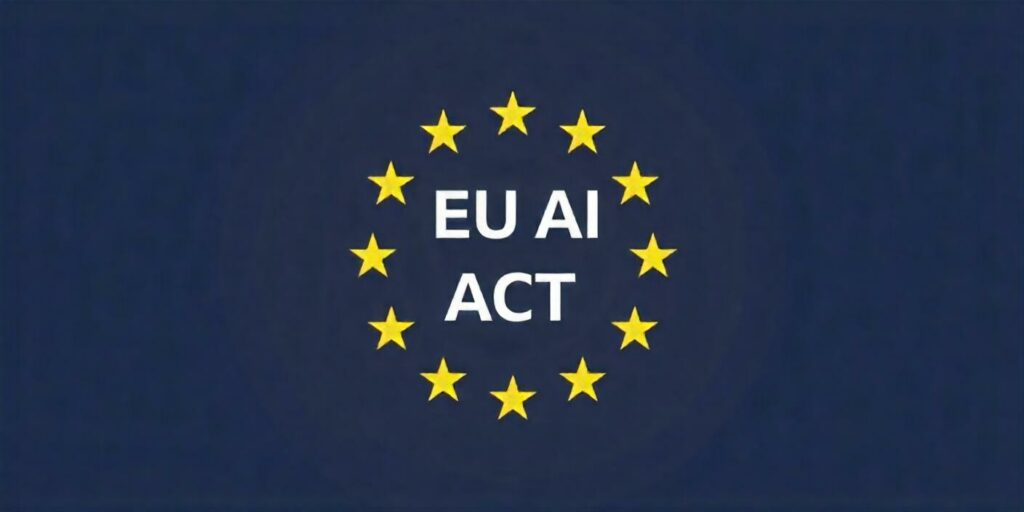
Smart Steps for AI Regulation Compliance
The EU AI Act is here, and it's changing how businesses use artificial intelligence.
AI is a tremendous tool, simplifying so many aspects of our lives. From planning dinner to optimising client onboarding, AI does it all.
However, as with anything that impacts people's daily lives, rules and regulations must be in place to protect the user. Cars must have airbags and seatbelts; businesses must comply with AI regulations.
The EU AI Act, officially in force since 1 August 2024, is the first major law of its kind, setting rules for AI across the European Union. This affects any company that makes, uses, imports, or distributes AI that impacts EU citizens, even if the company is not based in the EU.
Why the EU AI Act Matters
This new law ensures that AI is safe, respects human rights, and is used responsibly. It wants to build trust in AI while still allowing innovation.
Think of it as the General Data Protection Regulation (GDPR) but for artificial intelligence.
The Act is designed to protect people from potential harms caused by AI, like bias, discrimination, and privacy violations.
Understanding the Different Risk Levels
The EU AI governance framework categorises AI systems based on their risk level. There are four main categories. However, the legislation around AI design, use, and distribution does have several exceptions.
Unacceptable Risk
These AI systems are banned. This includes things like AI that manipulate people's behaviour in a harmful way, government social scoring, and real-time facial recognition in public spaces (with very few exceptions).
High Risk
This includes AI in healthcare, education, hiring, and law enforcement. These systems must meet strict rules for safety, accuracy, and fairness.
For instance, AI used for hiring or managing essential things like energy supplies will have to follow certain standards.
Limited Risk
These AI systems need to be transparent. A good example is chatbots, which should let people know they are talking to AI.
Minimal Risk
The majority of AI systems fall into this category. They must comply with a few or no new regulations. Think of AI used in video games or spam filters.
AI Governance Framework and Your Responsibilities
You must adhere to certain regulations if your company uses or develops AI. The higher your risk level, the more responsibilities you'll have.
- Figuring out which category your AI systems fall into. You can use this EU AI Act Compliance Checker; just be warned that it's still being updated.
- Setting up AI risk management systems to find and reduce possible harm.
- Obey the rules for your risk category. This can include things like:
- Making sure the information used to train your AI is good, relevant, and well-managed.
- Keeping detailed records about your AI system and what it is for.
- Putting methods in place, so people can check and change what the AI does.
- Making sure your AI is accurate, strong, and secure from cyberattacks.
- General-purpose AI (GPAI) models must also be transparent about how they work.
Remember that EU AI Act rules are being introduced over time.
- The ban on AI with unacceptable risks started in February 2025.
- Rules for general-purpose AI will start in August 2025.
- Some rules for high-risk AI will begin in August 2026 and 2027.
The Cost of Non-Compliance
The EU AI Act has serious teeth. AI Act penalties for breaking the rules can be significant, anywhere from about €750 000 to €35 million.
- Companies could be fined up to 7% of their global annual sales or €35 million, whichever amount is higher, for using banned AI systems.
- Other violations can lead to fines of up to 3% of turnover, or €15 million.
- Providing incorrect or misleading information can result in fines of up to 1% of turnover or €7.5 million.
- If you're a provider of GPAI models, and you're found guilty of breaking the rules, it can lead to fines of up to 3% of global turnover, or €15 million.
- Administration fines related to GPAI breaches can range between €750 000 to €1.5 million.
If your company is accused of breaking the EU AI Laws, you are entitled to defend it before the fine is finalised. The penalty will depend on various factors like:
- The seriousness and length of the violation.
- How many people the rule-breaking affected.
- How you fixed the offence.
- If you've faced previous offences.
- How the European Data Protection Supervisor found out.
How to Comply
- Make a list of your AI systems. Find all the AI systems you are using or plan to use. Then, identify their risk level.
- Check how you manage your data. Make sure the information your AI uses is good, accurate, and kept safe.
- Review your cybersecurity. Strong cybersecurity is very important for AI systems, especially high-risk ones. Think about threat-led penetration testing and security audits to find any weak spots.
- Know what you need to do. Understand the specific rules for the risk levels that apply to your business.
- Create an AI governance framework. Set up clear plans and processes for how you will develop and use AI responsibly and what to do if things go wrong.
AI is impressive. But some things are better left to human experience. For example, 7ASecurity's penetration tests and security audits that assess your AI systems' security and compliance.
Our rigorous, manual approach ensures we identify and validate potential security risks and provide detailed, actionable insights, helping you achieve and maintain AI regulation compliance.
Book a free consultation today!
We can't wait to show you how our security services can protect your business.

